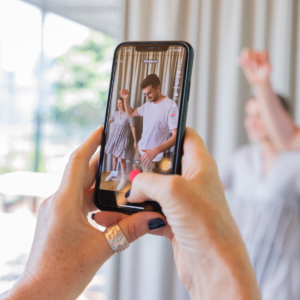
In the dynamic world of social media, trends have become powerful drivers of engagement, brand awareness and community interaction. Amidst the rise of TikTok and the growing number of online audiences, many companies have started partaking in various social media trends, from major brands like the popular language learning app Duolingo to smaller, more local organizations like law firms and libraries. Partaking in a social media trend can help spotlight businesses (and even help them go viral!) by keeping content fresh, fun and culturally relevant. However, it’s important to be strategic and thoughtful before diving right into online trends. Here are some things to consider:
Brand Alignment and Relevance
It’s a common misconception that social trends are exclusively for consumer brands and companies. Partaking in a certain trend can generate a positive response for any type of business if executed well and correctly. Before deciding to hop on a trend, consider what unique or surprising perspective the company can bring to the conversation. While the overall trend may not seem as relevant to certain types of companies, determine how you can integrate branded products and services to add a fun spin to branded content. Trends can be more engaging than traditional social content for their surprise element and creativity; they make a statement. It is important to evaluate which trends may be controversial or out of line with a company’s values to still maintain a good reputation with social audiences – but have fun with it!
Audience
When trends gain traction, they usually appeal to a wide audience. This can benefit business by simultaneously reengaging current followers and creating the opportunity to interact with new audiences. Seeing as many trends go viral, they can be helpful in expanding a brand’s reach and exposure. However, since social media platforms use algorithms to populate content in users’ feeds, it’s important to understand by participating in a trend, you have less control over who may see your content. As a result, your messaging may not be as useful or relevant to users, preventing them from taking additional action,engaging with a trend post, or developing into a loyal follower. Conversely, it’s possible to reach individuals who have never seen or heard of your company but could benefit from your service or product.
Authenticity
The demand for online authenticity continues to grow. If anything, many of these viral trends encourage companies to be candid and step outside of the realm of their typical content. However, it’s also important to maintain your regular content and avoid oversaturating your social accounts with these trends. Depending on your industry, services or products, becoming too “trendy” may feel inauthentic to your loyal and usual followers. You want to ensure that you’re maintaining brand and company standards, still reaching the target audience with relevant messaging.
Trend Longevity
Trends are known to be here one day and gone the next. It’s important to consider the lifespan of a trend, especially if your organization has a lengthy content approval or production process. The sooner you can partake in a trend, the better. If you’re too late to a trend, it may no longer feel relevant to audiences or have as great of an impact. The good news is that social platforms present a revolving door of new ideas and trends to capitalize on in the future.
In the current digital age, social media trends provide a dynamic avenue for brands to connect with their audiences and amplify their messaging. Check out some of our favorite viral organization examples:
The Milwaukee Public Library made a TikTok using a trending sound from the hit reality television show Dance Moms and ranked different places to get books (spoiler: local libraries are at the top)
High Point University posted on Instagram and made its own “Little Miss” and “Mr. Men” graphics inspired by the 1970s book characters. The trend was used to share common experiences or qualities between people, and the university adapted the graphics to make them relatable for students.
The Metropolitan Museum of Art partook in the #DollyPartonChallege. The original concept was posted by Dolly on Instagram and shares four different photos that represent how people would present themselves on different social media platforms. In this case, The Met used art to depict their presence on LinkedIn, Facebook, Instagram and Tinder.
Jonathan W. Johnson LLC, a local Atlanta law firm, shared a video with their staff dancing to a trending sound. They edited the video to read “I want hardworking lawyers who will win my case” as the background sound plays “we’ve got what you’re looking for.”
*The title of this blog references the “she’s/he’s a 10” trend. The trend originated with people rating an imaginary ideal person on a scale of 1 to 10 before presenting a negative or positive trait that might affect their score. This trend was playfully adopted by brands and businesses to encourage people to use their products.